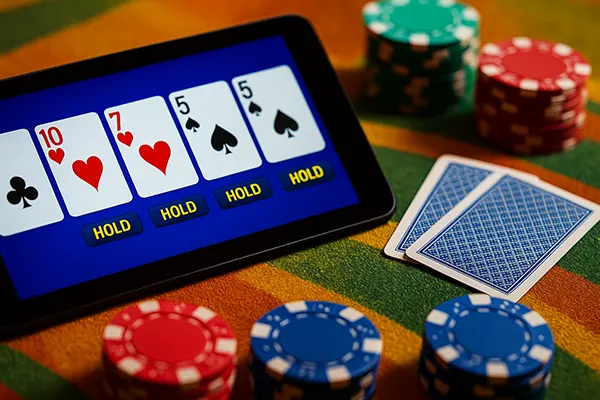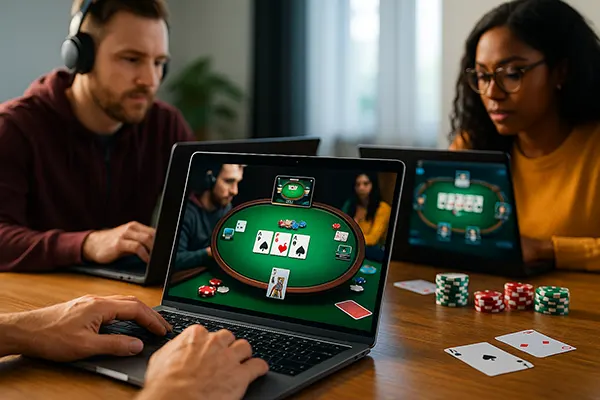
Evolution of Poker Strategies: How the Game Has Changed Over the Past 20 Years
Over the past two decades, poker has transformed from a game largely guided by instinct into a highly analytical discipline shaped by data, technology, and global competition. This shift has fundamentally altered how players approach strategy, making modern poker more complex and intellectually demanding than ever before.
The Rise of Analytical Play
In the early 2000s, most players relied on experience and intuition, using physical tells and betting patterns as their main sources of information. This approach worked well in live games, but the growth of online poker removed many of these visual cues, forcing players to develop new ways of evaluating opponents.
Analytical thinking became central to poker strategy. Players started using statistical concepts like pot odds, expected value, and equity calculations to make informed decisions. Instead of depending on gut feelings, they based their plays on probability and long-term profitability.
This shift created a new competitive landscape. Those who embraced analytical methods rose quickly, while those clinging to old habits were left behind, unable to compete with data-driven opponents.
The Impact of Tracking Tools
Software tools like heads-up displays (HUDs) and hand history trackers became essential for serious players. These tools gathered data on opponents’ tendencies, allowing players to spot leaks and optimise their strategies. By reviewing large samples of hands, players could identify patterns that were invisible during real-time play.
As databases grew, so did players’ understanding of optimal ranges and frequencies. This made the game more objective and reduced the influence of luck over the long run. It also raised the average skill level dramatically, especially at mid- and high-stakes tables.
Players who used these tools responsibly gained a significant edge, setting the stage for the rise of solver-based strategies in the following decade.
The GTO Revolution
Game Theory Optimal (GTO) concepts reshaped modern poker. GTO is a balanced approach that makes a player’s strategy unexploitable in the long term. Instead of relying on reading opponents, players focus on building mathematically sound strategies that work against any playing style.
The introduction of solvers—advanced programs that simulate countless scenarios—allowed players to refine their strategies with extreme precision. These tools helped them understand optimal bet sizing, range composition, and how to adjust to different board textures.
While pure GTO play can be difficult to execute perfectly, understanding its core principles gave players a foundation to build upon. It became a vital skill for anyone competing at the highest levels.
Balancing GTO and Exploitative Play
Although GTO offers theoretical perfection, many professionals combine it with exploitative tactics. By observing opponents’ mistakes, they can deviate from GTO to extract additional value. This balance between theory and exploitation has become a hallmark of modern high-level poker.
Exploitative adjustments require careful observation and a deep knowledge of standard strategies. Skilled players know when to follow solver recommendations and when to adapt to human tendencies. This flexible approach allows them to capitalise on weaker opponents while remaining solid against strong ones.
This hybrid style illustrates how modern poker strategy blends mathematical theory with psychological insight, offering a comprehensive approach to winning play.

The Role of Training and Globalisation
The past 20 years have also seen an explosion of training resources and global competition. Online courses, coaching programs, and discussion forums made high-level knowledge widely accessible, shortening the learning curve for new players.
This democratisation of information led to a new generation of players who entered the game with strong theoretical foundations. Young professionals from around the world began dominating tournaments, bringing diverse styles and fresh perspectives to the game.
As poker spread globally, cultural diversity enriched the strategic landscape. Players had to adapt to different regional tendencies and playing styles, which accelerated strategic evolution and pushed the boundaries of the game.
Continuous Adaptation in Modern Poker
Today’s top players must constantly adapt. Strategies that were cutting-edge a few years ago can quickly become outdated as the player pool improves and new tools emerge. Regular study, data analysis, and mental discipline are essential for staying competitive.
Modern professionals approach poker like a science, testing strategies in controlled environments, reviewing results, and making data-driven adjustments. This methodical process has replaced the intuitive style that once dominated the game.
As technology and knowledge continue to advance, poker will keep evolving. Players who embrace this constant change are the ones most likely to succeed in the coming decades.



